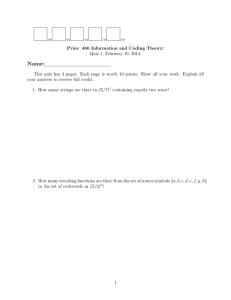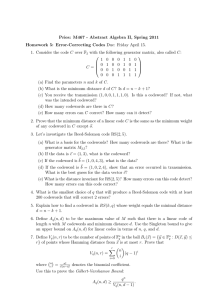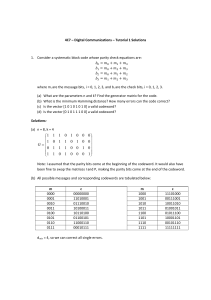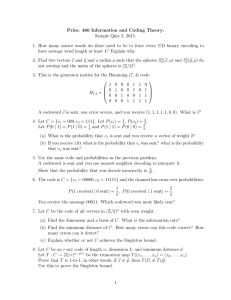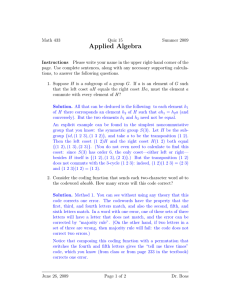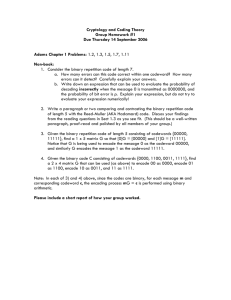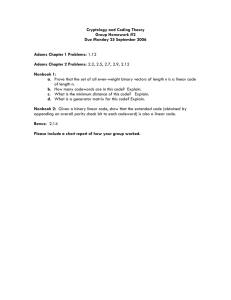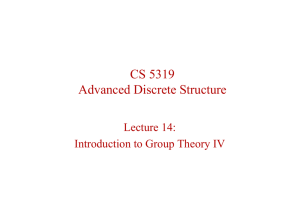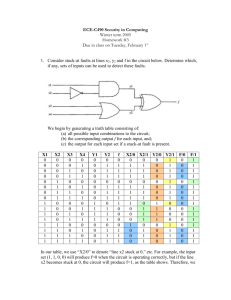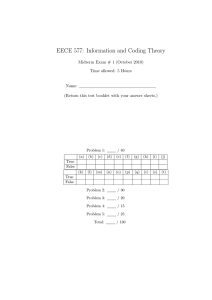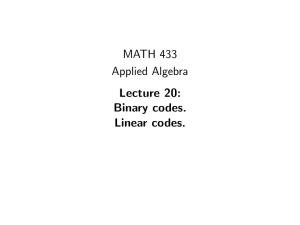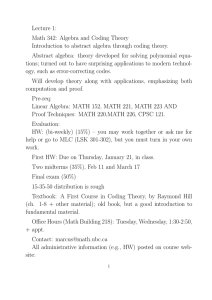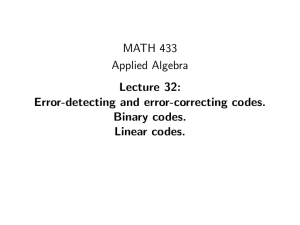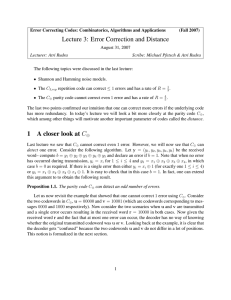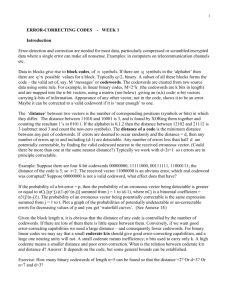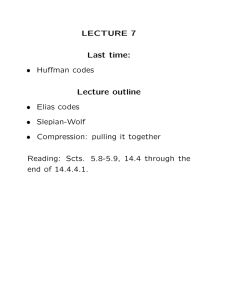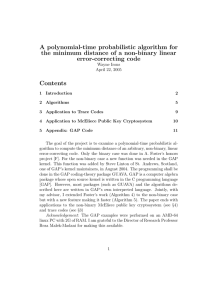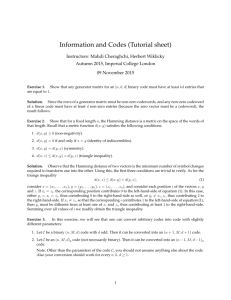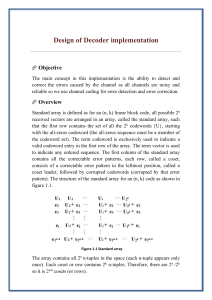Applied Algebra
advertisement
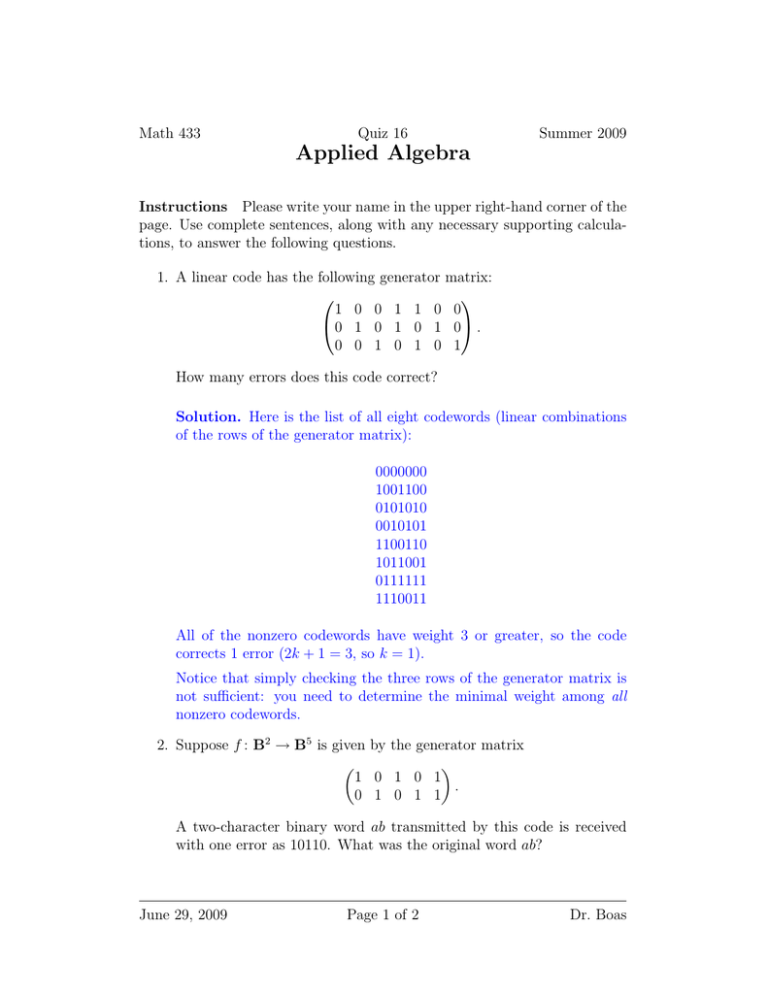
Math 433 Quiz 16 Summer 2009 Applied Algebra Instructions Please write your name in the upper right-hand corner of the page. Use complete sentences, along with any necessary supporting calculations, to answer the following questions. 1. A linear code has the following generator matrix: 1 0 0 1 1 0 0 0 1 0 1 0 1 0 . 0 0 1 0 1 0 1 How many errors does this code correct? Solution. Here is the list of all eight codewords (linear combinations of the rows of the generator matrix): 0000000 1001100 0101010 0010101 1100110 1011001 0111111 1110011 All of the nonzero codewords have weight 3 or greater, so the code corrects 1 error (2k + 1 = 3, so k = 1). Notice that simply checking the three rows of the generator matrix is not sufficient: you need to determine the minimal weight among all nonzero codewords. 2. Suppose f : B2 → B5 is given by the generator matrix 1 0 1 0 1 . 0 1 0 1 1 A two-character binary word ab transmitted by this code is received with one error as 10110. What was the original word ab? June 29, 2009 Page 1 of 2 Dr. Boas Math 433 Quiz 16 Summer 2009 Applied Algebra Solution. Method 1. The four codewords are 00000, 10101, 01011, and 11110. You can see by inspection that 10110, the received word, differs from the first codeword in three places, from the second codeword in two places, from the third codeword in four places, and from the last codeword in one place. Therefore the maximum-likelihood decoding is the last codeword, 11110. The original two-character word was therefore 11, the first two characters of 11110. Method 2. Here is the parity-check matrix: 1 0 1 0 1 1 1 0 0 . 0 1 0 0 0 1 Here is a (nonunique) table of syndromes and coset leaders: 000 001 010 100 011 101 110 111 00000 00001 00010 00100 01000 10000 11000 10010 The syndrome of 10110, the received word, equals 011. Therefore the word decodes as the sum 10110 + 01000, or 11110, the same answer as before. June 29, 2009 Page 2 of 2 Dr. Boas
